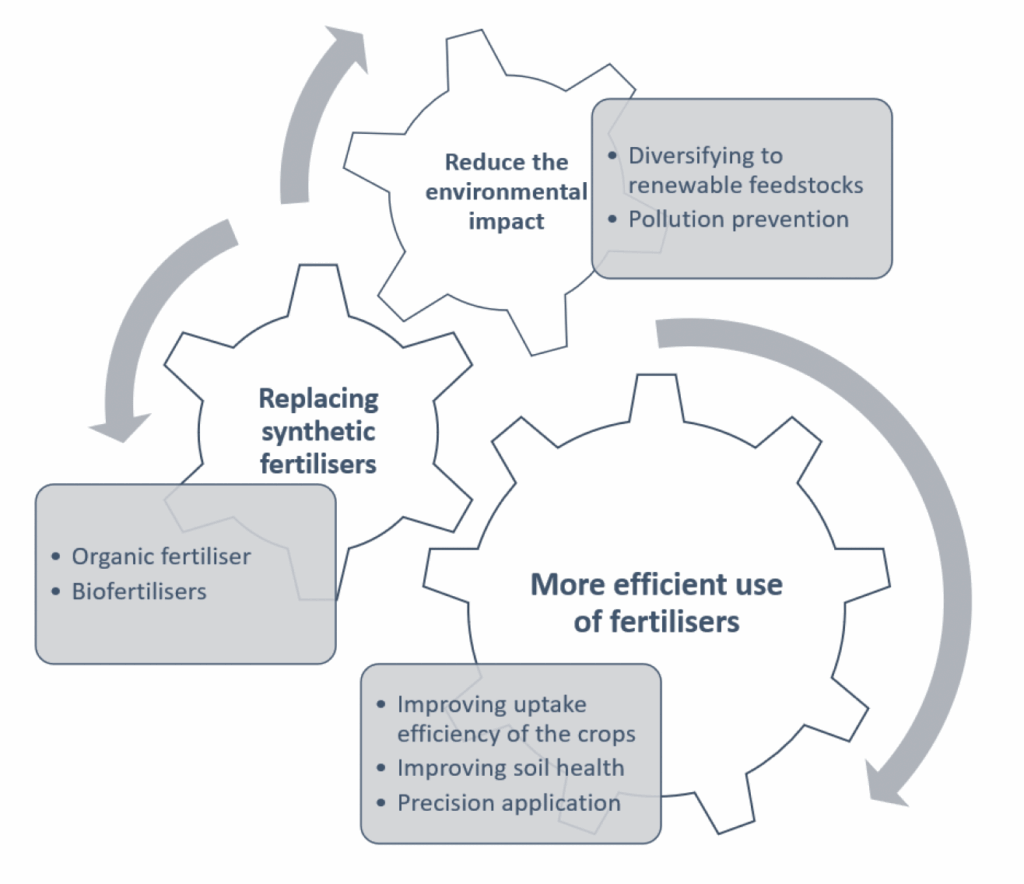Effect of net zero agricultural practices on air pollution
The UK experiences high concentration episodes of fine particulate matter (less than 2.5 microns in diameter, PM2.5) generally throughout March and April associated with agricultural emissions, emitted within the UK and across mainland Europe. These episodes are generally characterised by high concentrations of ammonium-nitrate and organic compounds. Ammonium-nitrate formation pathways are relatively well understood in comparison to organic compounds which represent a complex source of thousands of different compounds, from a range of primary and secondary pathways.
The use of synthetic and animal-based fertilisers is widespread throughout the UK and Europe. In addition, organic fertiliser usage, including the recycling of organic waste products and digestate biowastes, has been gaining increasing attention in recent years due to its net zero carbon emissions, significant soil health benefits as well as the increasing cost of synthetic mineral fertilisers. The proportion of agricultural fields across the UK and Europe that incorporate organic fertilisers is expected to increase in the future and this was included as a solution to reduce the impacts of fertiliser in a recent UK Parliamentary Office for Science and Technology note (see figure 1)

The use of these fertilisers results in large emissions of greenhouse gases, inorganic gases such as ammonia and volatile organic compounds (VOCs). Non-methane VOCs emitted when applying, storing or transporting these fertilisers are not well characterised and therefore remains a highly unconstrained source of air pollution. The emissions of VOCs alongside ammonia which are key precursors for secondary pollutant formation such as PM2.5. PM2.5 acts as both a local and transboundary pollutant, as such, changes across Europe could have significant impacts on UK air quality, so understanding the key drivers of PM2.5 formation agricultural fertiliser use is vital from a human health perspective.
The aim of this project is to comprehensively characterise and quantify agricultural VOC and ammonia emissions from organic fertilisers under a range of temperatures through laboratory measurements to develop robust emissions profiles for models to evaluate implications on UK and regional air quality and subsequent health effects. The formation of secondary organic aerosol from these VOC emissions will be investigated using the York Aerosol Chamber. A key focus will be understanding the temperature dependence of emissions and PM2.5 formation to influence targeted measures at certain times of year to reduce high springtime concentrations. Training will be provided on the use of analytical techniques for analysing the composition of air pollutants, including high resolution chromatography and mass spectrometry. You will be based in the Wolfson Atmospheric Chemistry Laboratories and have access to state-of-the-art instrumentation, aerosol chambers and workshops.
The results from the project will be of direct benefit to a range of government, academic and industrial stakeholders. This project aims to tackle a key uncertainty in the implementation of net zero practices and climate scenarios on air pollution across the UK. It will provide direct evidence to the Department for Farming and Rural Affairs (DEFRA), addressing key uncertainties around organic aerosol formation from agricultural emissions and investigating the potential unintended consequences of promoting a shift from synthetic to organic fertilisers both within the UK and across Europe. Future predictions of the health impacts of poor air quality in the UK relies on the accurate understanding of the role of changing agricultural practices and the implications on transboundary sources.
